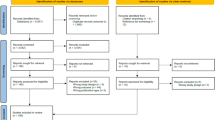Abstract
Purpose
To determine how much money could potentially be saved by re-evaluating a patient’s prior recent abdominal CT for lumbar spine pathology instead of ordering a lumbar spine MRI.
Methods
Abdominal CT studies, from all consecutive patients who had an abdominal CT within 12 months prior to a lumbar spine MRI obtained between 11/1/15 and 5/30/16, were retrospectively reviewed in a blinded fashion for the presence of any significant lumbar spine abnormalities. CT studies that accurately reflected all normal and abnormal findings when compared to the standard of reference, the prospectively interpreted lumbar spine MR imaging reports, were used to indicate which lumbar spine MRI studies potentially could have been avoided and to calculate the potential cost savings.
Results
Of the 81 abdominal CT studies that met the inclusion criteria of this study, 62% (50/81) were TP, 28% (23/81) were TN, 5% (4/81) were FP, and 5% (4/81) were FN studies. 90% (73/81) of the lumbar spine MRI studies could potentially have been avoided during the 7 months of this study. The predicted savings by reviewing the abdominal CT for lumbar spine abnormalities prior to ordering a lumbar spine MRI are an estimated 1.2–3.4 billion dollars per year.
Conclusion
Recent abdominal CT studies should be reviewed for lumbar spine pathology prior to a patient undergoing lumbar spine MRI. Avoiding unnecessary lumbar spine MRI studies could potentially save the U.S. healthcare system an estimated 1.2–3.4 billion dollars per year.



Similar content being viewed by others
References
Armao D, Semelka RC, Elia J (2012) Radiology’s ethical responsibility for healthcare reform: tempering the overutilization of medical imaging and trimming down a heavyweight. J Magn Reson Imaging 35:512–517
Chou R, Qaseem A, Owens DK, Shekelle P (2011) Diagnostic imaging for low back pain: advice for high-value health care from the American College of Physicians. Ann Intern Med 154:181–189
Lehnert BE, Bree RL (2010) Analysis of appropriateness of outpatient CT and MRI referred from primary care clinics at an Academic Medical Center: how critical is the need for improved decision support? J Am Coll Radiol 7:192–197
Bartalena T, Giannelli G, Rinaldi MF, et al. (2009) Prevalence of thoracolumbar vertebral fractures on multidetector CT: underreporting by radiologists. Eur J Radiol 69(3):555–559
Müller D, Bauer JS, Zeile M, Rummeny EJ, Link TM (2008) Significance of sagittal reformations in routine thoracic and abdominal multislice CT studies for detecting osteoporotic fractures and other spine abnormalities. Eur Radiol 18:1696–1702
Carberry GA, Pooler BD, Binkley N, et al. (2013) Unreported vertebral body compression fractures at abdominal multidetector CT. Radiology 268(1):120–126
Bartalena T, Rinaldi MF, Modolon C, et al. (2010) Incidental vertebral compression fractures in imaging studies: lessons not learned by radiologists. World J Radiol 2(10):399–404
Thornbury JR (1993) Disk-caused nerve Compression in patients with acute low-back pain: diagnosis with MR, CT myelography, and plain CT. Radiology 186:731–738
Rinck PA. Magnetic resonance in medicine. The basic textbook of the European Magnetic Resonance Forum. The Round Table Foundation. http://magnetic-resonance.org/ch/21-01.html. Accessed 21 Dec 16.
Patel ND, Broderick DF, Burns J, et. al. ACR Appropriateness Criteria® on low back pain. American Collage of Radiology. https://acsearch.acr.org/list/ neurologic/low back pain/narrative& rating table. Accessed 15 Aug 16.
Roudsari B, Jarvik JG (2010) Lumbar spine MRI for low back pain: indications and yield. AJR 195:550–559
Hendee WR, Becker GJ, Borgstede JP, et al. (2010) Addressing overutilization in medical imaging. Radiology 257:240–245
Levin DC, Spettell CM, Rao VM, et al. (1998) Impact of MR imaging on nationwide health care costs and comparison with other imaging procedures. AJR 1(70):557–560
Swensen SJ, Kaplan GS, Meyer GS, et al. (2011) Controlling healthcare costs by removing waste: what American doctors can do now. BMJ Qual Saf 20:534–537
Gonzalez JM (2011) Imaging professionals’ beliefs on overutilization of CT and MRI exams. Radiol Manag 6:41–46
Weiner DK, Kim YS, Bonino P, Wang T (2006) Low back pain in older adults: are We utilizing healthcare resources wisely? Pain Med 7(2):143–150
Schroth WS, Schectman JM, Elinsky EG, et al. (1992) Utilization of medical services for the treatment of acute low back pain: conformance with clinical guidelines. J Gen Intern Med 7:586–597
Weishaupt D, Zanetti M, Hodler J, et al. (1998) MR imaging of the lumbar spine: prevalence of intervertebral disk extrusion and sequestration, nerve root compression, end plate abnormalities, and osteoarthritis of the facet joints in asymptomatic volunteers. Radiology 209:661–666
Jensen MC, Brant MN, Obuchowski N, et al. (1994) Magnetic resonance imaging of the lumbar spine in people without back pain. N Engl J Med 331:69–73
Boden SD, Davis DO, Dina TS, Patronas NJ, Wiesel SW (1990) Abnormal magnetic-resonance scans of the lumbar spine in asymptomatic subjects a prospective investigation. JBJS 72(3):403–408
Davis PC, Wippold FJ, Brunber JA, et al. (2009) ACR Appropriateness Criteria® on low back pain. J Am Coll Radiol 6:301–307
Author information
Authors and Affiliations
Corresponding author
Ethics declarations
Funding
This study received no funding.
Conflict of interest
The authors report no conflicts of interest directly related to this study.
Ethical approval
This retrospective study does not contain any procedures on human participants or animals performed by any of the authors.
Informed consent
The local institutional review board approved this retrospective study and waived the informed consent requirement. This study complied with HIPPAA guidelines.
Rights and permissions
About this article
Cite this article
Klein, M.A. Reuse and reduce: abdominal CT, lumbar spine MRI, and a potential 1.2 to 3.4 billion dollars in cost savings. Abdom Radiol 42, 2940–2945 (2017). https://doi.org/10.1007/s00261-017-1201-9
Published:
Issue Date:
DOI: https://doi.org/10.1007/s00261-017-1201-9




